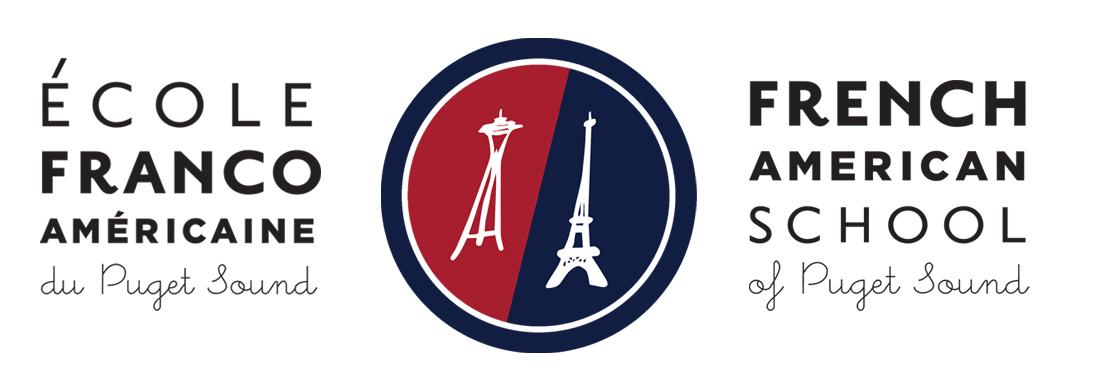

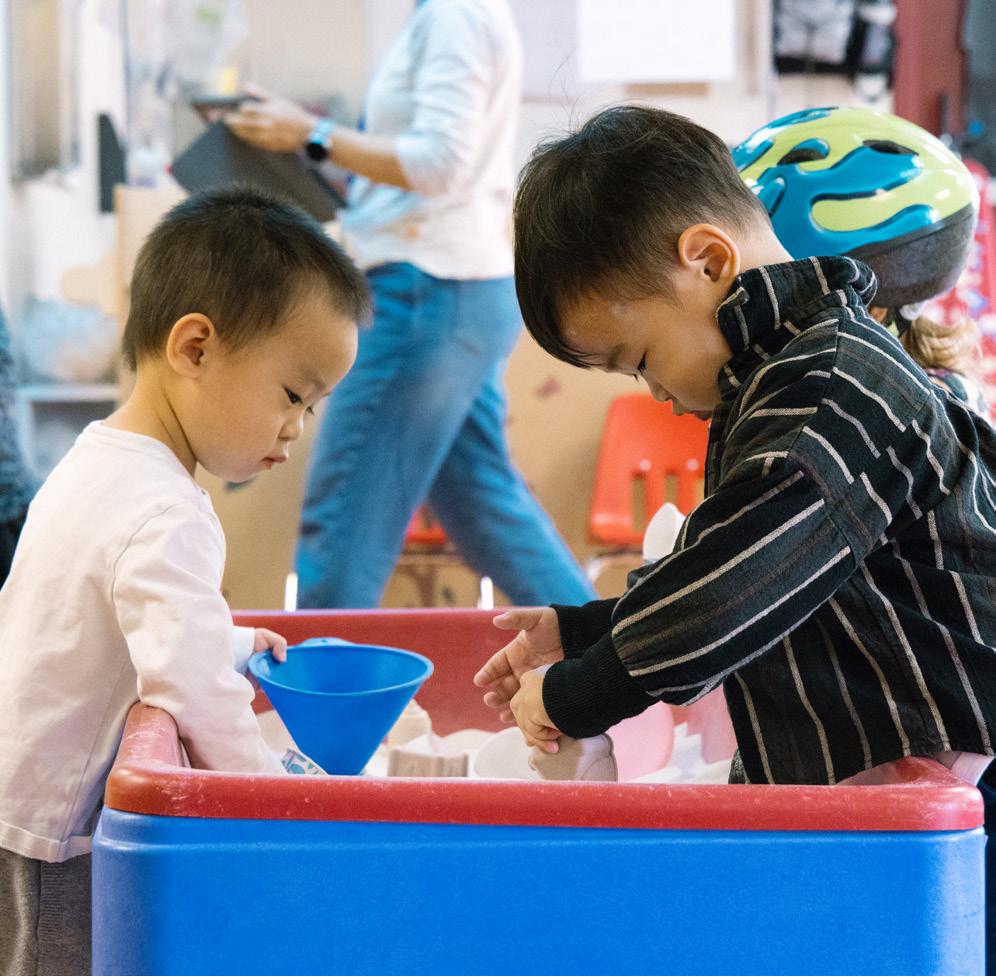
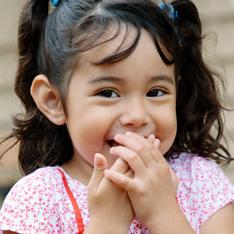
le m o nde
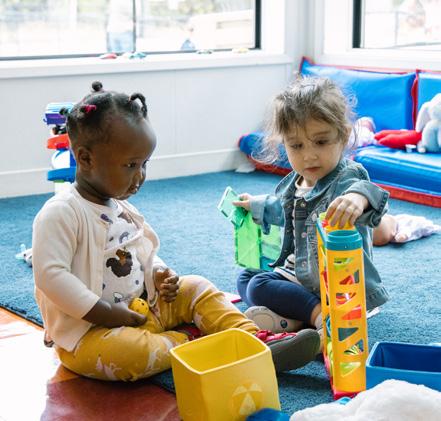
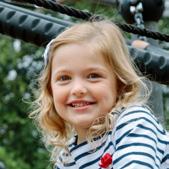





le m o nde


OUR PRESCHOOL PROGRAM BEGINS AT 18 MONTHS OF AGE

Why Bilingualism? | Page 2
Why French? | Page 4
Why FASPS? | Page 6
For Our École maternelle | Page 6
For Our Bilingual Program | Page 6
For Our Harmonized Program | Page 7
For Our Diverse Community | Page 7
For Our Differentiated Approach | Page 8
For Our International Student Body | Page 9
A Closer Look at Our École maternelle | Page 10
We Challenge Students With a Robust Bilingual Curriculum
We Adapt to Young Children and Their Emotional Needs
We Design Specific Learning Environments
Five Learning Areas: Our Preschool Program’s Mission | Page 12
1. Language in All Its Dimensions | Page 13
2. Physical Activities | Page 14
3. Creative Practice | Page 15
4. Structured Thinking Through Numbers, Forms & Sequences | Page 16
5. Exploring Time, Space & Matter | Page 17
Discover FASPS | Page 18
FASPS’s Admissions Process | Page 20
1 | To Stimulate the Brain: Acquiring a second language means learning a whole new set of grammar rules and vocabulary. While your brain is keeping up with the new language’s complexities and taking in its different patterns, new developments are happening in the brain. Just like muscles, the brain gets stronger and bigger the more you put it to use.

2 | To Help Maintain Focus and Block Distractions: With attention spans narrowing more and more every day, learning a second language may be the antidote. Studies show that the average person’s attention span has dropped from 12 to eight seconds. Regularly switching between two (or more) languages helps the brain maintain focus and block distractions.
3 | To Open Up Career Options: We are living in a diverse and multicultural world, and many companies are opening offices overseas to extend their market. With the need for bilingual candidates greater now than ever, acquiring a second language will double the number of jobs available to you and help you advance in your career more quickly.
4 | To Boost Creativity: Knowing a second language isn’t only beneficial to the brain; it also influences your level of creativity. As a person starts to learn a language, they get familiar with the culture of the places where that language is spoken. The more you learn about new cultures, the more you’ll look at the world around you from different perspectives. The change of views will increase your originality and flexibility — all qualities of being a creative person.

5 | To Improve First Language Skills: One learns the mother tongue intuitively and without any formal education. Being raised in a society where a particular language is spoken, children start to pick up the language they hear. However, learning another language is a whole different deal. From the beginning, you’ll get introduced to grammar, vocabulary, idioms, and sentence structure. As you learn more about the second language, you become more conscious of what you know in the first language.
6 | To Build Multitasking Skills: Not many people are good at multitasking. However, this often doesn’t apply to bilingual people. They are some of the most experienced when it comes to multitasking. Their brain has been practicing in switching from one language to the other daily. When a person gets used to switching from one language to another, it isn’t difficult for them to use this skill in other tasks as well.
| To Slow Down Cognitive Decline: Learning a second language may reduce your chances of early onset of cognitive impairments. More than 16 million people in the United States live with cognitive impairment, be it Alzheimer’s disease, dementia, or other disorders. The latest study on the effect of bilingualism in cognitive aging found that people who spoke more than one language regardless of their gender, ethnicity, and occupation experience the onset of cognitive decline four and a half years later than those who spoke only one language.
8 | To Improve Memory: The more physical exercise you do, the more your muscles strengthen and get larger. This applies to the brain too. The more you challenge it, the more the brain expands, and the better it functions.
9 | To Boost Self-esteem: No one wants to be put in the spotlight, especially when talking in a foreign language when the chances of making mistakes are quite high. Yet, this is what characterizes language learning. It breaks you out of your shell again and again, and eventually you’ll feel comfortable in every situation regardless of whether you’re making mistakes or not.

1 | French Is a World Language: More than 300 million people speak French on the five continents. The OIF (Organisation internationale de la Francophonie), an international organization of French-speaking countries, comprises 88 member states and governments. French is the second most widely learned second language after English, and the fifth most widely spoken language in the world. French is also the only language, alongside English, that is taught in every country in the world. France operates the biggest international network of cultural institutes, which run French-language courses for close to a million learners.
2 | French Is a Language for the International Job Market: The ability to speak French and English is an advantage on the international job market. Knowledge of French opens the doors of French companies in France and other French-speaking parts of the world. As one of the world’s largest economies and a leading destination for foreign investment, France is a key economic partner.
3 | French Is the Language of Culture: French is the international language of cooking, fashion, theater, the visual arts, dance, and architecture. A knowledge of French offers access to great works of literature in the original French, as well as films and songs. French is the language of Victor Hugo, Molière, Léopold Sendar Senghor, Edith Piaf, Jean-Paul Sartre, Alain Delon, and Zinedine Zidane!
4 | French Is a Language for Travel: France is the world’s top tourist destination, attracting more than 87 million visitors a year. The ability to speak even a little French makes it so much more enjoyable to visit Paris and all

the regions of France, and offers insights into France’s culture and way of life. French also comes in handy when traveling to French-speaking parts of the world.
5 | French Is a Language for Higher Education: Speaking French opens up opportunities to study at renowned French universities and business schools, ranked among the top higher education institutions in Europe and the world.
6 | French Is the Other Language of International Relations: French is both a working language and an official language of the United Nations, the European Union, UNESCO, NATO, the International Olympic Committee, the International Red Cross, and international courts. French is the language of the three cities where the EU institutions are headquartered: Strasbourg, Brussels, and Luxembourg.
7 | French Opens Up the World: An ability to understand French provides access to an alternative view of the world. You can follow French thinkers and leaders from all over the world and news from the leading Frenchlanguage international media (e.g., TV5Monde, France 24, and Radio France Internationale).
8 | French Is Fun to Learn: French is an easy language to learn, making it enjoyable for children and adults alike.
9 | French Is a Language for Learning Other Languages: French is a good base for learning other languages, especially Romance languages (Spanish, Italian, Portuguese, and Romanian), as well as English since nearly 30% of English vocabulary is derived from French.
10 | French Is the Language of Love and Reason: First and foremost, learning French is the pleasure of learning a beautiful, rich, melodious language that is often called the language of love. French is also an analytical language that structures thought and develops critical thinking, which is a valuable skill for discussions and negotiations.

There is no direct translation or equivalent of the French « École maternelle » since it is particular to the educational system of France. Our École maternelle (starting at 18 months) is a single, cohesive program that takes account of children’s development and establishes a link between family and school. Learning modalities are organized around problem-solving, drills, and memory exercises, with play having a special place in learning at this stage. Children develop their oral language skills and begin to discover writing, numbers, and other areas of learning. Our École maternelle allows children to live and learn, providing a place to begin to acquire the principles of social life, and allowing them to build an identity as an individual within a group.

Language acquisition is at the heart of our program, but we are not a language school. All of the subjects we teach are taught in French and/or in English, with Spanish and Mandarin introduced in sixth grade. Bilingual individuals are at a distinct advantage in the world, so much so that being bilingual is considered the norm in many countries. Bilingualism affords the bilingual individual economic, cognitive, health, social, and cultural benefits.

Harmonization is a term used in education when faculty have collaborated to make intentional links across curricula, across pedagogical practices, and across student learning experiences. Over the years, FASPS has developed a uniquely engineered, harmonized program grounded in the curricular architecture of the French Ministry of National Education, Washington State standards, and our own mission-guided objectives. Harmonization offers students a comprehensive, competitive, and stimulating educational experience. Through collaboration and harmonization, FASPS faculty work closely together to determine student needs, plan project themes and ideas, and develop curriculum content and assessments. By the end of eighth grade, our students have benefited from the best of both educational systems.
Diversity is fundamental to our identity as a school. We embrace diversity in our students, families, faculty, and staff because we believe that in order for our students to flourish in a world as complex as ours, with all its wonders and its challenges, its beauty and its heartache, they need to embrace and celebrate both themselves as individuals and their fellow classmates. At FASPS we teach our students to open themselves up to different perspectives as they grow to understand, live in, and embrace the world.
“I’m less afraid of being me.”
NICOLAS GRADE 4
“Each language is a new speak five languages, you’re means that you can go that speak that language home there.” MIRMATTIA,
“If
you go to that country and you see something strange that you don’t see in your culture, you won’t be so flabbergasted.”
“It seems all over
BOUCOUNTA
Across all grades and cycles, we strive to provide differentiated instruction to each student. We believe that students have different learning styles, comprehension levels, and pedagogical needs and must be engaged in the classroom in a customized manner; it is essential to our students’ success. At FASPS we strongly believe that every student is unique and needs to be challenged. We provide them with appropriate support and enrichment in collaboration with parents, teachers, specialists, and administration. Excellent education is the result of ongoing team effort where all stakeholders are involved.
FASPS doesn’t just change you as a student or a person, but it changes you as a human into how you see the world.
NOUR, GRADE 8
new person, so if you you’re five people. That to any of those countries language and you can feel at MIRMATTIA, GRADE 7
seems like I am over the world.”
BOUCOUNTA GRADE 3
“You can do math in many different ways, like, there’s a French way to do division, and there’s an English way to do division, and they both work equally well.”
“Even though we’re all different, we’re all the same.”
Beyond their incredible diversity, our 435 students come from over 50 countries and speak more than 35 languages. The world truly is their home, and FASPS truly is a microcosm of the world. Most of our English-speaking families do not speak French at home, but all of our students without formal French in their background are fully integrated into class with native French-speaking students and native French-speaking teachers to help them speed their language acquisition and socialization (of note, many of our families speak neither French nor English at home).

Language acquisition is at the heart of our program. Because the best time to learn a second language is before six years of age, students (and families!) of any level of French are welcome to apply, as young minds pick up a second and even third language quite naturally. In their first years of learning a new language, children will not understand everything they hear. Teachers use sign language, gestures, visual cues, manipulatives, exaggerated facial expressions, and expressive intonation to communicate meaning. Teachers will also use toys, puppets, props, and other materials to work on language development.
As the years progress, children naturally use more of the French language in expressing feelings and needs and in communicating with peers and adults. To engage and motivate students in developing their skills, teachers use songs, idiomatic expressions, rhymes, stories, and collaboration among students. Each day is carefully crafted with familiar routines and regular check-ins to provide consistency and social and emotional safety for the child.

At FASPS, our students’ social and emotional development is a priority. Teachers use differentiated instruction, adjusting a variety of teaching and learning approaches and tools tailored to each child’s level and unique way of learning. Teachers assist students in finding their own way to express their emotions and feelings, develop their self-esteem, grasp the value of empathy, help one another, and share with others.

Our École maternelle teaches children how to live and learn together. Students are taught how to shape their own identities as individuals within the expectations and ideals of living in a group and in society. Our classroom learning community lays the groundwork for students to become respectful and open-minded citizens who will thrive in a diverse world.
Learning environments are created around problem-solving, memory games, and manipulative workshops. Our faculty has carefully planned our school program to stimulate the student’s curiosity while meeting their needs for movement, rest, play, and discovery. Various learning situations are selected according to the needs of the group and the needs of each child. The curriculum includes multiple opportunities for sensory experience, development of motor skills, relationship building, and playtime. Teachers favor hands-on experimentation and learning by doing rather than worksheets or formal practices.

The mission of our École maternelle (preschool) program — which comprises students in tiny young prekindergarten (“TYPK” students must be at least 18 months old and do not need to be potty-trained), young prekindergarten (“YPK” students must be at least 30 months old and potty-trained), prekindergarten (“PK”), and kindergarten (“K”) — is to give children the desire to come to school to learn, and to affirm and develop children’s personalities. This stage of schooling lays out the foundational learning blocks on which a child’s future education is built.
Our École maternelle curriculum is organized into five “Learning Areas,” each of which is both essential to children’s development and built into their daily schedules:
1. Language in All Its Dimensions
2. Physical Activities
3. Creative Practice
4. Structured Thinking Through Numbers, Forms, and Sequences

5. Exploration of Time, Space, and Matter

Language concerns all areas of learning and is considered fundamental to future success in school and in life. Oral language interactions (speaking and listening) give students the opportunity to communicate, to learn, to understand, and to seek understanding. Games Games involving phonics help children to differentiate between the characteristics of French and English. Written language is progressively introduced to students as a form of communication that allows them to log events or information, engage in deeper thinking, address someone who is not present, and learn to tell stories, both fictional and nonfictional. Both English and French curriculum teachers utilize sign language regularly to support comprehension and language expression.

• Communicate with adults and with other children, making themselves understood.
• Practice different forms of speaking: telling, describing, evoking, explaining, questioning, proposing solutions, discussing a point of view.
• Recognize the letters of the alphabet and some of the sounds associated with them.
• Recognize the letters of the alphabet and know the correspondences between the different ways of writing them: cursive, print, small, capital. Copy using a keyboard.
• Recite nursery rhymes and poems from memory.
• Show curiosity about writing. Be able to repeat the words of a written sentence, a known title, or a text after an adult reads it.
• Verbally participate in creative writing. Understand that we do not write as we speak.
• Write the child’s first name in cursive or script without a model.
• Write a word using letters or groups of letters borrowed from known words.
• Practice the fundamental shapes of cursive to develop fine motor skills and learn the alphabet.

The regular practice of physical activities contributes to the motor, sensory, intellectual, social and emotional development of children. Physical activity stimulates and expands the imagination of children and gives them an opportunity to experience new emotions and sensations. Children are challenged to explore their abilities, refine their motor skills, and develop their sense of balance and laterality. Activities play an important role in socialization, as students must cooperate and build relationships in order to succeed. In seeking the engagement of all children, we challenge stereotypes and establish equality between girls and boys. Finally, the pleasure of movement and the exertion of effort, regardless of one’s “performance,” boosts self-esteem and helps students better understand and respect their own bodies.
• Running, jumping, throwing in different ways, in different spaces, with various materials, for a specific purpose.
• Adjust and link the child’s actions and movements according to obstacles to be crossed or the trajectory of objects to act on.
• Move with ease in a variety of natural or designed environments.
• Build and maintain a sequence of actions and movements, in relation to other partners, with and without musical support.
• Coordinate movement with music, individually and as part of a group.
• Cooperate, exercise different complementary roles, oppose each other, develop strategies to achieve a common goal or effect.


This area of learning refers to the visual arts, the performing arts, and the study of music. These practices include painting, sculpture, drawing, photography, film, cartooning, graphic arts, digital arts, singing, playing instruments, dancing, acting, circus arts, puppetry. The École maternelle is a cornerstone in discovering the vast universe of art and unlocking the student’s path to expression, creativity, and artistry.



Young children have a sense of scale that allows them to compare and approximate sizes, shapes, and volumes, as well as collections of objects (“that’s a lot,” “just a few,” etc.). When they begin school, they may be able to distinguish between small quantities and count to 20 without a real understanding of quantities and numbers. In our École maternelle, we use manipulatives to offer a deeper conceptual look at what numbers represent: quantities, rank / position, symbols, etc. This learning takes time and practice with various situations involving pre-numerical and numerical activities.
• Evaluate and compare quantities with numerical or non-numerical procedures.
• Make a collection of objects whose cardinal is given. Use counting to compare two quantities, to make a collection, or to make a collection equal to the suggested quantity.
• Use numbers to express the position of an object or person in a game, in an organized situation, in a rank, or to compare positions.
• Understand that the cardinal number does not change if we modify the spatial arrangement or the nature of the elements.
• Understand that any number is obtained by adding one to the previous number and that this corresponds to the addition of a unit to the previous quantity.
• Quantify collections to at least 10, composing them and breaking them down by actual and then mental manipulations. Say how much to add or to remove to obtain quantities not exceeding 10.

Through exploration, children intuitively perceive spatial and temporal dimensions in their immediate environment. These perceptions enable them to acquire a first set of benchmarks, and to develop expectations and memories of the recent past; however, this knowledge remains implicit and limited. One goal of our École maternelle is to lead children step by step to consider time and space as relatively independent dimensions of present activities. Children gradually begin to look beyond their own point of view and see that of the other. Teachers propose activities that encourage observation, guesswork, identification, and classification. Children begin to understand what distinguishes living from non-living matter.


• Locate events in relation to each other and identify them in the day, week, month, or season.
• Order a sequence of photographs or images in order to account for a lived situation or a fictional narrative by indicating succession and simultaneity.
• Use appropriate time markers (then, during, before, after) in narratives, descriptions, or explanations.
• Relate to others, relative to landmarks.
• In a familiar environment, take a journey or a path from its representation (drawing or coding).
• Orient and use a sheet of paper, book, or other writing material correctly, according to instructions, purpose, or a specific project.
• Use appropriate spatial markers (front, back, right, left, top, bottom) in narratives, descriptions, or explanations.



1. Schedule an In-person Tour at www.Ravenna-Hub.com/ Login: We believe that meeting families one-on-one is the best way to establish a personal connection and make the most of your visit to the school, so all of our tours will be one family at a time. We invite you to register for an in-person tour during the morning while class is in session or outside of regular school hours. For morning tours, we will ask for proof of vaccination upon entrance.
2. Sign up for a Quick Phone or Teams Call at Calendly.com/FASPS/Discover-FASPS: Quickly learn more about our program while asking our Admissions team any questions you may have.

• France’s global network of French schools and what it means to be a FrenchAmerican school.
• The value and life-long advantages of a bilingual education.
• FASPS’s diverse and international community.
• The qualifications of our faculty.
• The structure of our curriculum from Tiny Young Pre-kindergarten (TYPK) through Grade 8.
• Arts and music, coding and technology, physical education, and field trips.
• Our team of learning specialists.
• Student wellbeing and social and emotional learning at FASPS.
• Our Extended Day, Hot Lunch, and Bus Programs.
• And more … !
Please Note:

• Students do not need to speak French until Grade 1.
• French does not need to be spoken at home.

There is no French language requirement for students entering Tiny YPK through Kindergarten.
For Grades 2–8, language proficiency in French is required, and a language assessment may be required for admission.
Children must be potty-trained beginning in YPK before the start of school. Applicants for Tiny YPK are not required to be potty-trained.
Step 1: Submit an Application
Step 2: Family Interview
Step 3: Submit Prior School Reports or Teacher Recommendations if Applicable
Step 4: Student Visit
Step 5: Decisions Released



French American School of Puget Sound
Mercer Island Campus
3795 E Mercer Way
Mercer Island, WA 98040
Telephone: (206) 275-3533
Email: Bonjour@fasps.org
French American School of Puget Sound
Seattle - Capitol Hill Preschool Campus
1823 East Madison Street
Seattle, WA 98122
Telephone: (206) 644-8348
Email: Bonjour@fasps.org